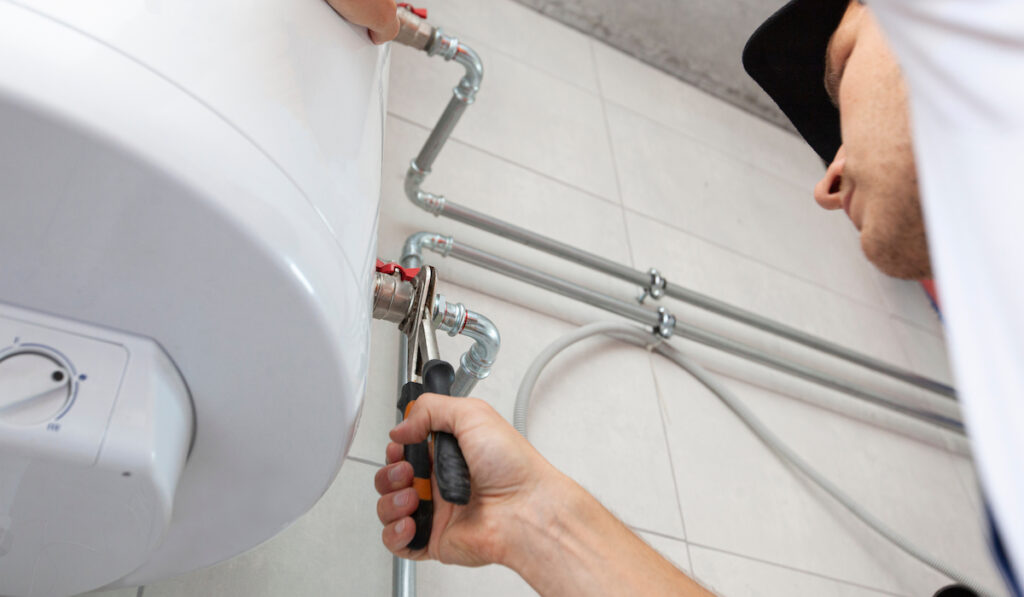Steps to Successfully Care for Your Home's Hot Water System
Steps to Successfully Care for Your Home's Hot Water System
Blog Article
We've come across this article on How to Maintain Your Water Heater & Prolong its Life directly below on the web and reckoned it made good sense to talk about it with you on this site.

Warm water is necessary for everyday comfort, whether it's for a rejuvenating shower or washing recipes. To guarantee your hot water system runs efficiently and lasts much longer, routine maintenance is key. This write-up supplies practical tips and understandings on exactly how to maintain your home's hot water system to prevent disruptions and pricey repair services.
Introduction
Preserving your home's hot water system might appear complicated, however with a couple of easy actions, you can guarantee it operates efficiently for many years ahead. This guide covers every little thing from comprehending your warm water system to DIY upkeep pointers and knowing when to call expert aid.
Significance of Keeping Your Hot Water System
Regular upkeep not only prolongs the life-span of your hot water system however also guarantees it operates successfully. Overlooking upkeep can lead to reduced performance, higher energy bills, and also premature failure of the system.
Indicators Your Warm Water System Needs Upkeep
Knowing when your warm water system requires attention can stop major problems. Look out for indications such as irregular water temperature, unusual sounds from the heating system, or rusty water.
Recognizing Your Hot Water System
Before diving into maintenance tasks, it's practical to understand the basic parts of your warm water system. Usually, this consists of the hot water heater itself, pipelines, anode poles, and temperature controls.
Monthly Upkeep Tasks
Normal month-to-month checks can help catch minor issues before they rise.
Purging the Hot Water Heater
Flushing your water heater removes sediment buildup, enhancing performance and lengthening its life.
Monitoring and Changing Anode Rods
Anode rods stop deterioration inside the container. Evaluating and replacing them when worn out is important.
Checking and Changing Temperature Level Setups
Changing the temperature level setups makes certain optimum efficiency and safety and security.
DIY Tips for Maintenance
You can do numerous upkeep jobs on your own to keep your hot water system in top condition.
Checking for Leaks
On a regular basis check pipes and connections for leaks, as these can lead to water damage and higher costs.
Examining Stress Alleviation Valves
Checking the pressure relief valve guarantees it operates appropriately and stops extreme pressure build-up.
Shielding Pipes
Insulating hot water pipes lowers warm loss and can save power.
When to Call a Specialist
While DIY maintenance is advantageous, some issues call for expert competence.
Complex Concerns Needing Expert Aid
Instances include major leakages, electric troubles, or if your hot water heater is consistently underperforming.
Routine Specialist Upkeep Conveniences
Expert maintenance can consist of extensive evaluations, tune-ups, and making certain conformity with safety requirements.
Final thought
Normal maintenance of your home's hot water system is necessary for performance, longevity, and expense financial savings. By complying with these ideas and knowing when to seek professional help, you can make sure a dependable supply of hot water without unforeseen disturbances.
Water Heater Maintenance: The Basics
Maintaining your water heater will ensure it operates efficiently and has a longer lifespan. Neglecting regular maintenance can lead to costly repairs and an even bigger chunk of your savings if you have to replace it sooner than necessary. But there’s good news: Most water heater maintenance tasks are relatively simple and easy for homeowners with basic DIY skills.
Flush the Water Heater
Over time, sediment and minerals can build up in the tank, reducing its efficiency and potentially causing damage. To flush the tank, turn off the power or gas supply, attach a hose to the drain valve near the bottom and open the valve to drain the water until it runs clear. Ideally, flush the tank annually.
Replace the Anode Rod
The anode rod is a sacrificial metal rod that helps prevent corrosion inside the tank. Inspect and replace it every three to five years or per the manufacturer's recommendation. To replace the anode rod, turn off the power or gas supply, drain a few gallons of water from the tank, unscrew the old rod and replace it with a new one. If the anode rod is significantly corroded or covered in calcium buildup, it's a sign the water heater may need to be replaced soon.
Tune-Up
A yearly tune-up can help identify potential issues and ensure your water heater operates at peak efficiency. This typically involves checking the thermostat, burner assembly (for gas heaters) and any other components specified by the manufacturer. During a tune-up, the technician may also clean the burner and adjust the pilot light (for gas heaters) or examine the heating elements (for electric heaters).
How to Maintain Your Water Heater
Insulate the tank. Insulating the tank can improve energy efficiency and reduce heat loss, saving you money on energy bills. You can purchase precut insulation blankets designed specifically for water heaters or use standard fiberglass insulation wrapped securely around the tank. Check the temperature. The recommended water temperature for most households is around 120 degrees Fahrenheit (49 degrees Celsius). Higher temperatures can increase energy costs and potentially cause scalding. Use a kitchen thermometer to check the temperature at the faucet nearest the water heater. Monitor water pressure. Excessive water pressure can strain the water heater and cause leaks or even tank failure. Install a pressure-reducing valve if necessary. The ideal water pressure range is between 60 and 70 PSI (pounds per square inch). Test the temperature and pressure (T&P) relief valve. The T&P relief valve is a safety feature that releases pressure if the tank gets too hot or the pressure builds up too high. Test it annually by lifting the lever and allowing a small amount of water to release. Replace the valve if it doesn't release water or reseal properly. Check for leaks. Regularly inspect the tank, pipes and fittings for leaks or corrosion. Deal with issues promptly to prevent further damage. Even a small leak can lead to significant water damage over time. Consider a tankless water heater. If your traditional tank-style water heater is nearing the end of its lifespan ( typically 10 years), consider replacing it with a tankless water heater. These units heat water on demand, reducing standby energy losses and potentially saving you money on your energy bills. Schedule professional maintenance. While homeowners can perform many water heater maintenance tasks, it's still a good idea to schedule professional maintenance every few years. A plumber or HVAC technician can thoroughly inspect the unit, identify potential issues and ensure it operates safely and efficiently. https://www.homeserve.com/en-us/blog/home-improvement/hot-water-heater-maintanence/

As a keen reader on How to Maintain Your Water Heater & Prolong its Life, I assumed sharing that excerpt was appropriate. Kindly set aside a second to share this entry if you liked it. We appreciate your readership.
Click Here Report this page